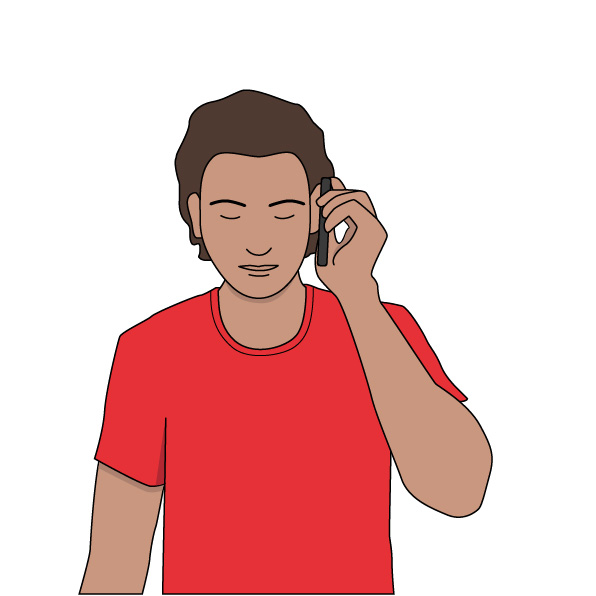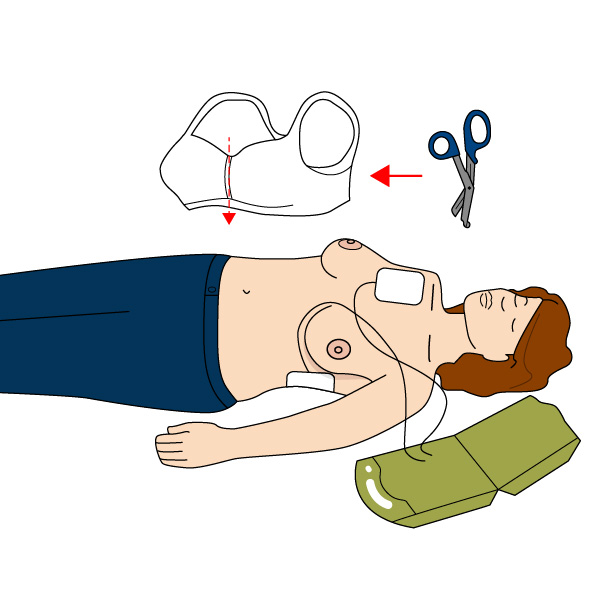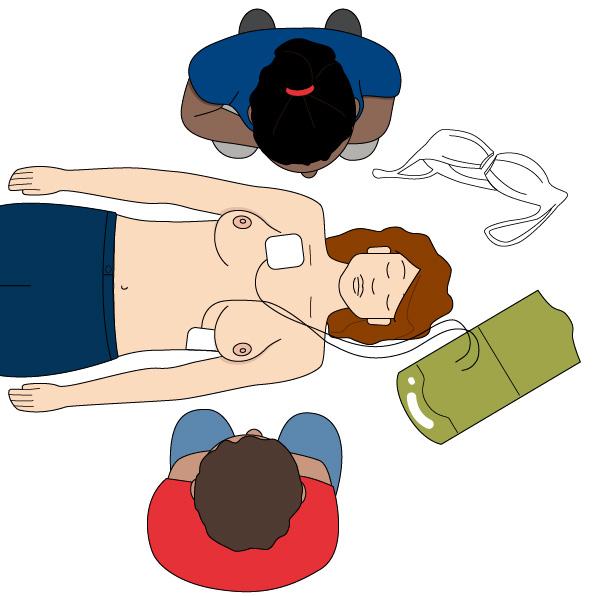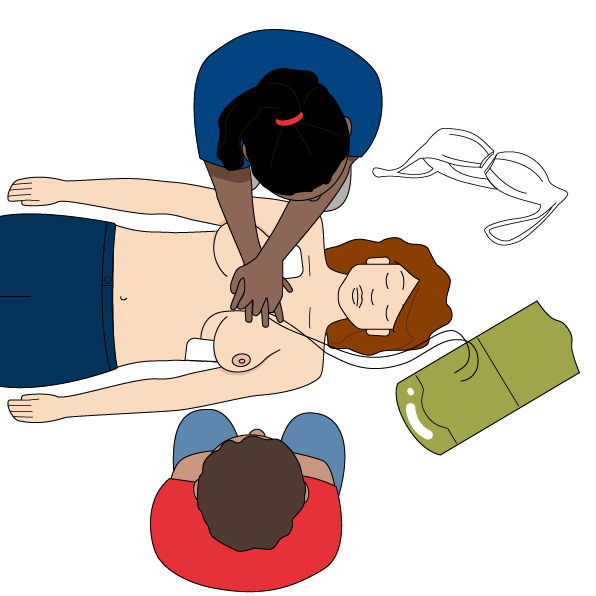HOW TO USE A DEFIBRILLATOR
HOW TO USE A DEFIBRILLATOR
By using a defibrillator before an ambulance arrives, you can significantly increase someone’s chance of survival. Learn what to do.

After performing a primary survey, and you find someone is unresponsive and not breathing normally, ask a helper to call 999 or 112 and ask for an ambulance while you start CPR. Ask a helper to find and bring a defibrillator, if available.
- Do not leave a casualty to look for a defibrillator yourself, rather, if there is someone else there send them to get one. The 999/112 emergency medical advisor can tell them where the nearest defibrillator is.
- If you’re on your own, use the hands-free speaker on a phone so you can start CPR while speaking to ambulance control.

When the helper returns with a defibrillator, ask for it to be switched on (some will have an on/off button whilst others will turn on when their case is opened). Once turned on, follow the verbal instruction from the defibrillator. Your helper should remove or cut through clothing to get to the casualty’s bare chest. Dry the chest if it is wet and place the pads as shown while you continue CPR.

They should attach the pads to the casualty’s chest by removing the backing paper. Apply the pads in the positions shown without stopping chest compressions.
- The first pad should be on the upper right side below the collar bone.
- The second pad should be on the casualty’s left side below and in line with the arm pit.
- Some pads have a sensor that goes under the chest compressor’s hands in the middle of the chest. If you have those pads, you will have to briefly stop chest compressions to place the sensor.

One the pads are on the defibrillator will tell you to stop CPR and analyse the heart’s rhythm. Make sure no one is touching the casualty. It will then give a series of visual and verbal prompts that you should follow.
- If the defibrillator tells you that a shock is needed, tell people to stand back. The defibrillator will tell you when to press the shock button. After the shock has been given the defibrillator will tell you to continue CPR for two minutes before it re-analyses.
- If the defibrillator tells you that no shock is needed continue CPR for two minutes before the defibrillator re-analyses.
- Some defibrillators are fully automated and don’t have a shock button. Instead of telling you to press the shock button they will warn you they are going to shock the patient, when they have delivered a shock and exactly like a semi-automated defibrillator, when to continue chest compressions.

If the casualty shows signs of becoming responsive, such as coughing, opening eyes or speaking, and starts to breathe normally, put them in the recovery position. Leave the defibrillator attached. Monitor their level of response and breathing and be prepared to start CPR again, if needed.



The Circuit
The Circuit is the national defibrillator network which maps defibrillators across the UK, connecting them directly and automatically to each ambulance service.
There are an estimated 100,000 defibrillators across the UK, however, tens of thousands of these are unknown to ambulance and emergency services. Once located and registered, emergency services can direct bystanders to their nearest defibrillator and increase a person’s chance of survival.
Give your defibrillator its best chance of saving a life – put your defibrillator on the map.Give your defibrillator its best chance of saving a life – put your defibrillator on the map.
Put Your Defibrillator On The Map!

